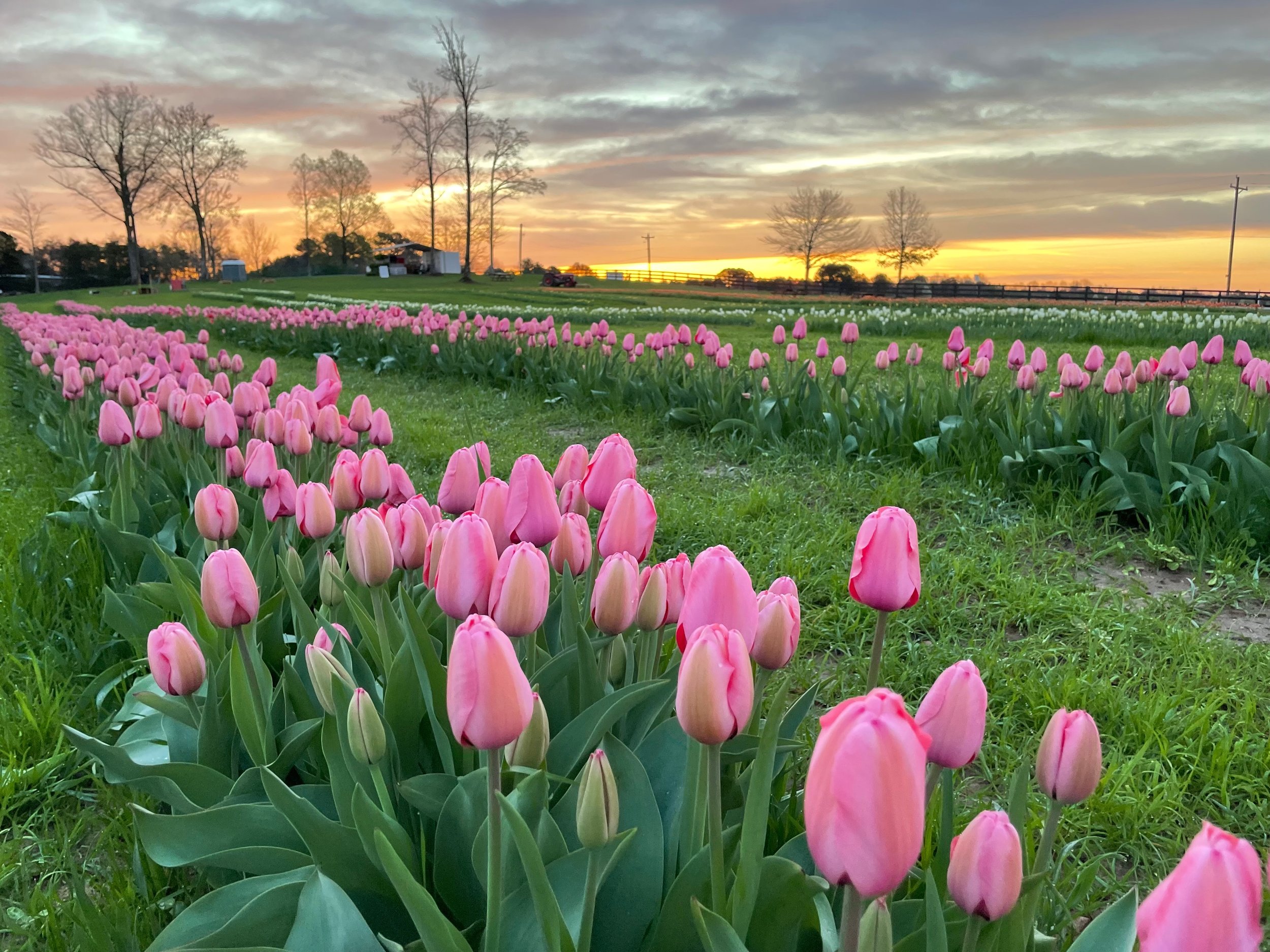Getting Started
Have you ever wanted to grow tulips but weren’t sure how to start? Or, maybe you are an experienced gardener looking for dirt on tulip basics. Either way, we are glad to help.
In 2020, Josh bought 4,000 bulbs from a friend-of-a-friend with high hopes of impressing Sara with a beautiful Spring display. He tilled his garden, hipped up a bed, and painstakingly planted his 4,000 bulbs one by one. At this point, it seemed like he had buried a good chunk of money and time. We want to help you get started with tulips and share our experience with you!
Step 1: Soil Preparation and Location
Tulips are very forgiving and can be planted in a variety of soil types and conditions. We typically plant in a well-drained soil that has been tilled to a depth of 6 inches or more. You can also plant under sod (grass), in flower beds, in raised beds, and in pots. A well drained site is best, but tulips have grit and will tolerate soil that stays wet periodically.
Its important to keep the soil moist after planting up until bloom. Usually this is not a problem in temperate areas as winter rainfall usually suffices for water needs. We have not had the need to irrigate the last 4 years.
Tulips need sunlight to grow well so make sure your site will have at least 6 hours of full sun.
There is no need to fertilize tulips since all the nutrients they need are contained within the bulb.
Step 2: Planting - spacing and depth
Tulips should be planted anywhere from 2-6 inches deep. If you are in area with prolonged sub-freezing weather, lean towards the deeper end of the range to protect the bulbs from harsh winters.
Space the bulbs according to your preference as tulip bulbs can be nearly touching each other on the sides or be feet apart. Our preference is to plant them thick for a nice display, so we shoot for 25-30 bulbs/sq. ft.
Step 3: Protect your bulbs
Realize that these nutrient-dense bulbs are attractive to a variety of critters including deer, squirrels and other varmints. If you know you will have these issues, plant your bulbs at least 4 inches deep to deter animals from digging them up. Once the flower bud emerges, you may want to apply some sort of deer repellent (ie, hot sauce, rosemary, etc) or possibly even cage them temporarily. For our large planting at the farm we use a liquid deer repellant made of sheep fat.
FAQ
What time of year do I plant my tulip bulbs?
Late fall through early winter. If you live in an area with warm winters be sure to keep them in your fridge until January. Conversely, in colder climates, plant tulips before the ground freezes. We have planted as early as November and as late as February with no issues.
Do tulip bulbs need to be planted with the tip upwards? No, they will find their way up! However, facing them all the same direction will result in a more uniform emergence.
How do I know which varieties to plant? Plant whichever ones look good to you! Some bulbs require more If you buy bulbs from us, we pre-cool all of them to ensure a long-stem which will produce a quality bloom, regardless of which part of the country you are in.
Do I need to fertilize or treat my soil?
Its not necessary to fertilize tulip bulbs since all of the nutrients they need are in the bulb. If you are trying to establish perennial bulbs, it may be helpful to apply an N-P-K fertilize to improve new bulb development.
Will my tulips come back and bloom a second year?
Probably not. The leaves will come back the second year but the new bulblets will not be large enough to produce a bloom. If you live in a cool climate you could see blooms in the 3rd or 4th year but some effort is required to make this happen. We purchase new bulbs every year from Holland.
Do I need to water my tulips?
The soil should be kept moist most of the time with the critical need for water in the spring once leaves emerge.

